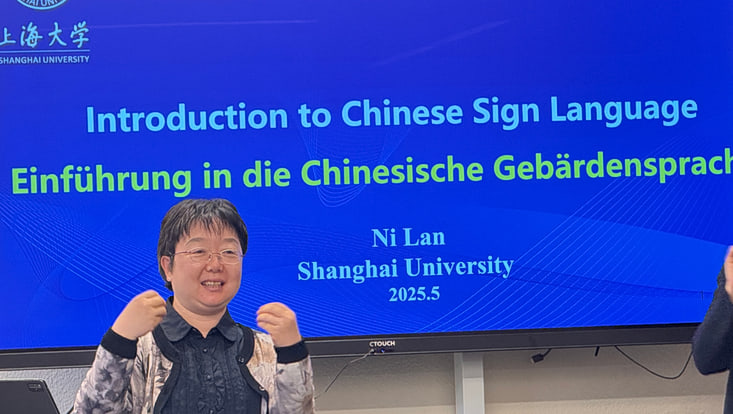German Sign Language and
Communication of the Deaf
Photo: UHH/Denstorf
21 May 2025

Photo: UHH/IDGS
On the morning of May 21, 2025, Ni Lan, a visiting scholar at IDGS, opened the door to the world of Chinese Sign Language (CSL) and the current state of CSL research.
The Historical Evolution of Chinese Sign Language and the Current State of CSL Research:
The part conducts a systematic investigation into the historical formation of Chinese Sign Language (CSL) and advancements in its linguistic research. Through a diachronic lens, it traces the symbiotic relationship between CSL and the history of deaf education in China, beginning with the establishment of the first deaf school—the Dengzhou School for the Deaf (China’s first deaf education institution)—in Yantai in 1887. This milestone marked the institutional coalescence of the deaf community and initiated CSL’s century-long evolution (1887–present) as an independent language. Constrained by the oralism paradigm, CSL only gained formal linguistic recognition in the early 21st century. Despite its relatively recent emergence, current research has systematically mapped CSL’s phonology, lexicon, and syntax, while expanding into applied linguistics domains such as professional sign language interpreting, language policy and multilingual pedagogical practices in deaf education.
Many thanks to all participants for the lively exchange!
